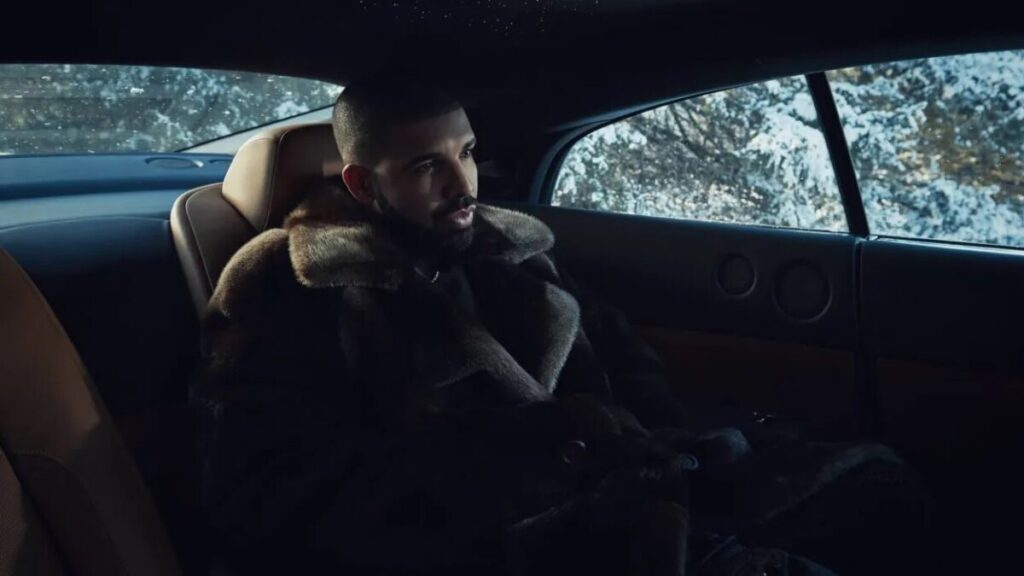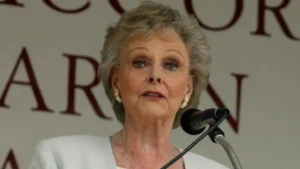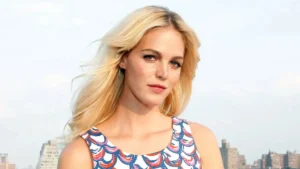Drake’s story in 2025 is no longer just about chart-topping singles or viral moments — it’s about strategy, structure, and staying power. While many rappers see their fame flicker out after a few seasons at the top, Drake has built something more enduring: a diversified empire that thrives beyond the studio. With an estimated net worth of $250 million in 2025, he stands as one of the most financially secure artists of his generation, proving that consistency can be as lucrative as disruption.
The secret lies in how Drake balances artistry with entrepreneurship. His dominance in streaming ensures a steady flow of royalties, but that’s only the foundation. Through OVO Sound, he extended his reach into music production and talent development, while the OVO brand itself became a cultural marker in fashion and lifestyle. Real estate, partnerships, and calculated investments further strengthen his financial fortress.
To understand the Drake empire is to look beyond the headlines and see the mechanics of longevity at work. This isn’t just a rapper stacking millions — it’s a mogul who rewrote the playbook for how hip-hop stars sustain wealth and influence in an era where the spotlight can vanish overnight.
How Much is Drake Worth in 2025? A Transparent Look
So, how much is Drake worth in 2025? Current industry estimates put his net worth at around $250 million, according to The Street, though figures can vary depending on the source and methodology. Unlike a single paycheck or endorsement deal, Drake’s wealth is the result of layered income streams that continue to pay dividends long after the music stops playing.
Financial analysts calculate net worth by combining liquid assets (like cash and royalties), long-term holdings (real estate, businesses), and brand value tied to his global influence. Drake’s fortune comes from three major categories: music, brand extensions, and investments. Here’s a simplified breakdown:
- Music royalties & streaming: Hundreds of millions of streams per month across Spotify, Apple Music, and YouTube.
- OVO Sound & OVO clothing: Profits from artist management, music distribution, and fashion collabs with Nike/Jordan.
- Business ventures & endorsements: Stakes in Virginia Black whiskey, cannabis, restaurants, plus partnerships with Nike and Sprite.
- Real estate holdings: Multi-million-dollar Toronto “Embassy” mansion and LA properties.
It’s important to note that Drake’s private investments aren’t fully disclosed, meaning some estimates may understate his actual net worth. Still, the $250M+ figure remains a reliable benchmark, underscoring how his empire extends well beyond music into lifestyle and business dominance.
Where Does Drake’s Income Come From? Breaking Down His Earnings
Music Royalties & Streaming — The Bedrock of Drake’s Wealth
At the core of Drake’s fortune are his music royalties, a steady stream of income that never sleeps. In the streaming era, his back catalog functions like a financial engine — tracks released a decade ago still pull in millions of plays every month. On Spotify alone, Drake regularly surpasses 80 million monthly listeners, making him one of the most-streamed artists in history. To put it in perspective, a billion streams can generate several million dollars in revenue, and Drake has multiple songs that have crossed that threshold. Apple Music and YouTube add to the pile, ensuring his music catalog value continues to climb. For Drake, royalties aren’t just residuals — they are the backbone of a financial empire built on repeat plays.
OVO Sound: From Indie Label to Global Brand
What began in 2012 as a boutique label for Drake and his circle has grown into OVO Sound, a powerhouse that shapes both music and culture. Rooted in the Canadian music scene, OVO became the launchpad for artists like PartyNextDoor, Majid Jordan, and dvsn, extending Drake’s influence far beyond his catalog. But OVO is more than a record label — it’s a cultural signal. The signature owl logo, Toronto pride, and carefully curated sound have transformed it into a global lifestyle brand. From OVO Fest to collaborations with Nike and Jordan, the label amplifies Drake’s reach while cementing his status as a tastemaker. In many ways, OVO Sound is Drake’s most enduring legacy: a fusion of music, branding, and cultural identity.
OVO Clothing & Streetwear Influence
The OVO clothing brand has evolved far beyond tour merch into a full-fledged streetwear staple. Anchored by its minimalist owl logo and seasonal drops, OVO has tapped into the exclusivity-driven culture of modern fashion. Limited releases sell out within minutes, often resold at multiples of retail, reflecting how deeply fans buy into OVO as a lifestyle rather than just apparel. Collaborations with Nike and Jordan have elevated the label’s credibility, positioning Drake not only as a music icon but as a fashion influencer. Rooted in Toronto identity yet embraced worldwide, OVO clothing represents cultural pride and aspirational cool. For fans, owning a hoodie or cap isn’t just about style — it’s about carrying a piece of the Drake empire everywhere they go.
Beyond Music — Drake’s Business Investments and Partnerships
Drake’s fortune isn’t built on music alone. His entrepreneurial instincts have pushed him into diverse arenas, ensuring that his wealth isn’t tied solely to chart success. Real estate anchors much of his portfolio: the Toronto “Embassy,” valued at tens of millions, is both a personal residence and a symbol of his global stature. In Los Angeles, he owns multiple properties that signal long-term appreciation, making the Drake real estate portfolio a solid foundation.
Then there’s his foray into beverages with Virginia Black whiskey, a partnership that tapped into celebrity-driven liquor trends pioneered by figures like George Clooney and Jay-Z. Drake has also invested in restaurants, the cannabis industry, and even tech startups — ventures that carry higher risk but also the promise of outsized rewards. Each of these moves reflects diversification: spreading investments across resilient industries, growing, or culturally relevant.
What sets Drake apart is timing. While Jay-Z built wealth by scaling into corporate holdings and Rihanna became a beauty mogul with Fenty, Drake has pursued a hybrid model — part cultural tastemaker, part investor. His business ventures reinforce his brand without locking him into one vertical. A timeline graphic of these deals would reveal a consistent pattern: calculated bets aligned with cultural momentum.
Drake’s investments prove that behind the music mogul is a strategist who understands the importance of hedging against the unpredictable tides of fame.
The Business of Longevity — How Drake Stays Relevant
Why is Drake still successful in 2025, when so many of his peers have faded? The answer lies in a deliberate music strategy designed for longevity. Drake understands that relevance in the streaming era is about more than releasing albums — it’s about cultural positioning.
One of his greatest strengths is versatility. By weaving in Caribbean rhythms, UK grime, Afrobeats, and trap, he stays ahead of global music trends without alienating his core audience. Every collaboration, from rising newcomers to global stars, reinforces his status as both tastemaker and cultural bridge. Industry analysts often note that Drake has mastered the art of “playlisting” — creating albums and singles that feel tailor-made for the digital era of Spotify and TikTok consumption. His surprise drops and TikTok-savvy tracks like “Toosie Slide” show how he embraces virality without chasing gimmicks.
Beyond streaming, OVO Fest has become a cornerstone of Drake’s longevity. Held in Toronto, the event doubles as a celebration of his roots and a platform for cultural dominance, drawing fans worldwide and spotlighting artists under the OVO umbrella.
Drake’s career relevance isn’t accidental; it’s the result of calculated reinvention. He’s built a model where adaptability equals sustainability, proving that in today’s fast-moving industry, the real empire is one that constantly evolves.
Is Drake Richer Than Jay-Z, Kanye West, or Travis Scott?
Drake vs Jay-Z — Music Mogul vs Rapper-Investor
When it comes to hip-hop wealth, Jay-Z and Drake represent two different models of empire-building. Jay-Z, with an estimated net worth of over $2.5 billion, has leaned heavily into an investor model — owning stakes in streaming (Tidal), luxury spirits (D’Usse, Armand de Brignac), and large-scale ventures that extend far beyond music. Drake, by contrast, has built his fortune — an estimated $250 million in 2025 — through a brand-driven empire rooted in his music persona. His OVO Sound label, OVO clothing brand, and cultural collaborations keep his wealth directly tied to his identity as an artist. What sets Drake apart is how his business ventures amplify his cultural relevance, while Jay-Z’s focus is on scaling capital into generational wealth.
Drake vs Kanye West — Brand Risk vs Brand Stability
Kanye West’s career is a case study in both creative genius and financial volatility. With an estimated net worth of around $400 million, his fortunes have swung dramatically due to high-profile controversies and the collapse of major partnerships, most notably Adidas cutting ties with Yeezy. By contrast, Drake has taken a steadier, more calculated path. His brand is built on consistency and adaptability, avoiding the kind of polarizing moves that can derail long-term wealth. While Kanye’s highs have been higher — at one point exceeding billionaire status — the instability highlights the risks of tying too much value to a single brand. Drake’s diversified yet stable empire shows how minimizing brand risk is just as important as maximizing cultural impact.
Drake vs Travis Scott — Touring, Merch, and Next-Gen Stars
Travis Scott has carved out his empire by blending music, merchandise, and brand collaborations, echoing the playbook Drake pioneered. With an estimated net worth of $80 million, Travis has leveraged Astroworld tours, Cactus Jack merchandise, and blockbuster deals with Nike and McDonald’s to become a cultural force among younger fans. Yet, Drake remains ahead because his empire is more diversified and time-tested. While Travis thrives on spectacle and hype-driven drops, Drake’s model balances global touring, steady streaming royalties, and the established OVO ecosystem. Travis may be building the “next-gen Drake,” but his empire is still growing, whereas Drake’s is already proven to be sustainable, making him the benchmark for hip-hop wealth and longevity.
Lifestyle, Real Estate, and Spending Habits
Drake’s lifestyle is as headline-worthy as his music, but behind the flex lies a layer of strategy. His Toronto mansion — famously nicknamed “The Embassy” — cost an estimated $100 million to design and build, making it one of the most Googled celebrity homes in Canada. With marble halls, an NBA-regulation basketball court, and an awards room, it’s both a personal sanctuary and a cultural landmark. In Los Angeles, Drake owns multiple properties valued at $20–30 million combined, showing his eye for prime real estate on both sides of the border.

Beyond homes, Drake’s luxury collection includes a private jet rumored to be worth $185 million, alongside fleets of hypercars and custom jewelry. While these purchases fuel the narrative of excess, they also contribute to the aura of the Drake lifestyle, reinforcing his global brand. The key distinction is that his real estate holdings appreciate, positioning them as smart investments, while the cars and jets feed cultural prestige. Together, they illustrate how Drake blends indulgence with strategy — flexing, yes, but always in ways that strengthen his image and portfolio.
How Drake’s Net Worth Was Calculated
Estimating Drake’s net worth in 2025 requires piecing together a mix of public and industry data rather than relying on a single definitive source. Analysts start with hard numbers: concert grosses reported to Billboard, streaming payouts from Spotify and Apple Music, and published record sales. Add to that the value of his real estate portfolio — including the Toronto mansion and Los Angeles homes — which can be verified through property filings and market estimates.
Royalties from his vast catalog are projected using average streaming payouts per billion plays, while brand ventures like OVO Sound, OVO clothing, and Virginia Black whiskey are assessed through industry comparisons and reported revenue. Endorsements and partnerships with companies such as Nike also factor in, though exact contract terms are rarely public.
What remains unknowable are private investments, undisclosed equity stakes, or future touring plans that could significantly alter the picture. For that reason, the $250 million estimate should be seen as a credible benchmark, not a fixed figure. By combining transparent financial data with reasoned assumptions, analysts can paint a trustworthy portrait of Drake’s empire, while acknowledging the inevitable gray areas of celebrity wealth reporting.
When I Witnessed the Drake Effect Up Close
I still remember stepping into Toronto on the weekend of OVO Fest — the city felt electric. Everywhere I turned, there were flashes of the signature owl logo: on hoodies, fitted caps, even tucked onto the backs of phone cases. By the time I walked into the stadium, the buzz had swelled into something more than a concert. It felt like a pilgrimage. The bass shook the air, fireworks lit up the sky, and when Drake finally took the stage, the crowd’s roar was deafening, a wave that seemed to ripple through the entire city.
In that moment, I realized Drake’s empire wasn’t confined to streaming numbers or fashion sales. It was about identity and belonging. Fans weren’t just buying into a song or a sweatshirt; they were buying into a shared culture that Drake built — part Toronto pride, part global aspiration. The OVO drop frenzy, the late-night club appearances, the collaborations with icons — all of it feeds a lifestyle that stretches far beyond music.
Looking back, I see how carefully orchestrated it all is. Drake isn’t just an artist; he’s a cultural architect. And the “Drake Effect” is proof that influence, when woven into daily life, is the most powerful currency of all.
What Drake’s Empire Teaches Us About Modern Celebrity Wealth
Drake’s rise to a $250 million business empire is less about luck and more about a deliberate celebrity wealth strategy. He’s shown that cultural longevity doesn’t come from chasing trends but from building an adaptable, diversified foundation. Music royalties may fuel the engine, but OVO Sound, clothing, real estate, and calculated partnerships prove that Drake treats fame as capital — something to reinvest, not just enjoy.
For the next wave of artists, the lesson is clear: in an industry where hits fade fast, ownership and brand identity are what endure. Drake demonstrates that the modern mogul is part musician, part entrepreneur, part cultural architect. His success underscores a shift in celebrity economics, where influence itself becomes a monetizable asset.
The Drake business empire signals the blueprint for the future — one where artistry and enterprise merge seamlessly. If yesterday’s stars relied on record deals, tomorrow’s will study Drake’s model: build wide, adapt constantly, and let culture do the compounding. In the end, his greatest legacy may not be a song, but the way he rewrote the rules of what it means to turn fame into fortune.
Nishant Wagh is the founder of The Graval and a seasoned SEO and content strategist with over 15 years of experience. He writes with a focus on digital influence, authority, and long-term search visibility.





2 thoughts on “Inside Drake’s $250 Million Empire: Music Royalties, OVO Sound, and the Business of Longevity”